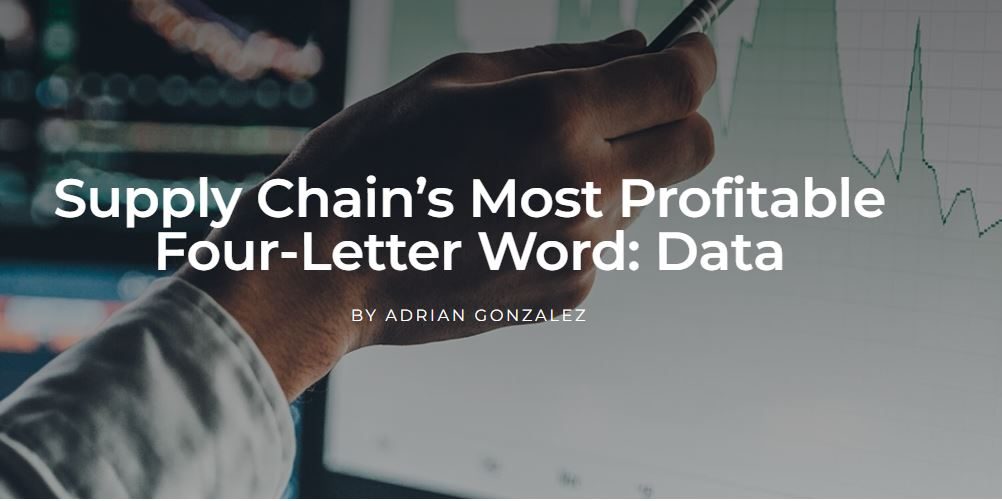Today, supply chain and logistics professionals are awash in all kinds of data. So, why do some companies seem to be drowning in it, while others find a way to convert it into business value? One area in particular where data plays a critical role is in transportation procurement. How does analyzing data effectively connect procurement to profitability? That’s the key question I discussed with Jake Papa, Senior VP of Enterprise at Emerge, in a recent episode of Talking Logistics.
Current State of the Freight Market
I began our discussion by asking Jake for his insights on the current state of the U.S. freight market. Jake points out that the market has been volatile for a long time, but they’re starting to see spot rates go down over the past few weeks. On the contract side, they’re also seeing higher tender acceptance rates, especially compared to “the COVID years” (mid 2020 through most of 2021).
“There has been a bit of a leveling out of the marketplace in regards to pricing, and with that, shippers are going to market and approaching procurement differently,” says Jake.
Changes in Transportation Procurement
Jake explains that with the decreases in rates so far this year, shippers who typically do an annual bid in the fourth quarter are now doing mini-bids or seasonal bids that may cover the next 3-6 months. “We’re seeing the number of mini-bids going up dramatically as shippers try to secure cheaper pricing.”
Despite the increases in mini-bids, Jake feels that strategic partnerships between shippers and brokers and asset-based carriers are still important. “Shippers who perhaps had 50 carriers previously may have expanded that to 75-80 carriers in order to secure capacity when it was tight. They are now toning those numbers down to more realistic expectations of how large their network needs to be and keeping their strategic partners moving forward,” Jake says. “You’ll always need those strategic relationships, but it’s the frequency of bids that is changing.”
Jake also comments that more frequent bid processes can actually benefit both shippers and carriers. “While shippers benefit from lower rates, carriers and brokers can benefit because the shorter time horizons take risks out of the process by removing the vibrations caused by fluctuations in the marketplace.”
How Technology Helps
One of the main reasons companies can do more frequent bids today is the availability of technology that automates the procurement process. Procurement used to be a long, manual, time-consuming process of collecting, analyzing, and exchanging data, usually done with spreadsheets. Now the process can be streamlined and automated using online technology platforms.
“You can duplicate a bid on a monthly or even weekly cycle with a few clicks,” notes Jake. “That’s where we’ve seen the value come through — in the ability to duplicate those bids and go to market much quicker, along with things such as scenario-building, optimization and low-cost solves, as well as automating the awarding process.”
Connecting Data to Profitability
The lynchpin for any technology is data. I asked Jake how procurement technology links data to profitability. Jake states that he looks at data three different ways.
“There is the shipper’s historical data – their volumes and the rates they’ve used in the past that they can use for things like benchmarking. There are also third-party data sets that can be used for this. And then there are the current rates you see in procurement events. Shippers can use technology to analyze all this data and it gives them more flexibility to choose from a much larger network of carriers offering cheaper rates. That allows them to save money on linehauls and be more profitable.
“For brokers and carriers, it allows them to evaluate historical information to price things out with less volatility, which increases their profitability. But it also allows them to go out to new markets with more aggressive rates on a shorter-term basis, which reduces their risk.”
Driving Profitability Going Forward
With the freight market continuing to experience significant volatility, how can companies leverage procurement technology and data to increase profitability? And how does improving customer service metrics and connecting to “the long tail” of the carrier network figure into this? Jake shares some great insights on those questions and more, so I recommend that you watch the full episode for all the details. Then keep the conversation going by posting a comment and sharing your experience or perspective on this topic.
Source: https://talkinglogistics.com/2022/05/16/supply-chains-most-profitable-four-letter-word-data/















